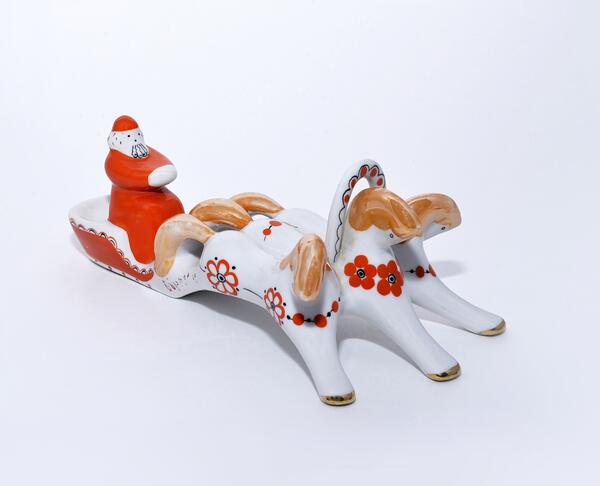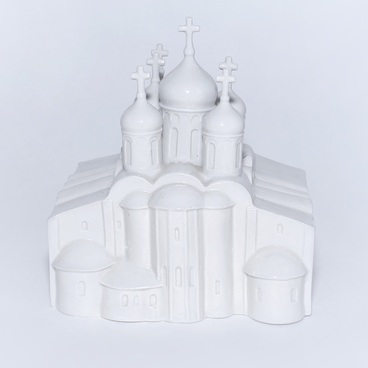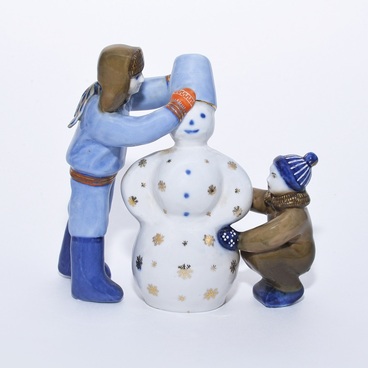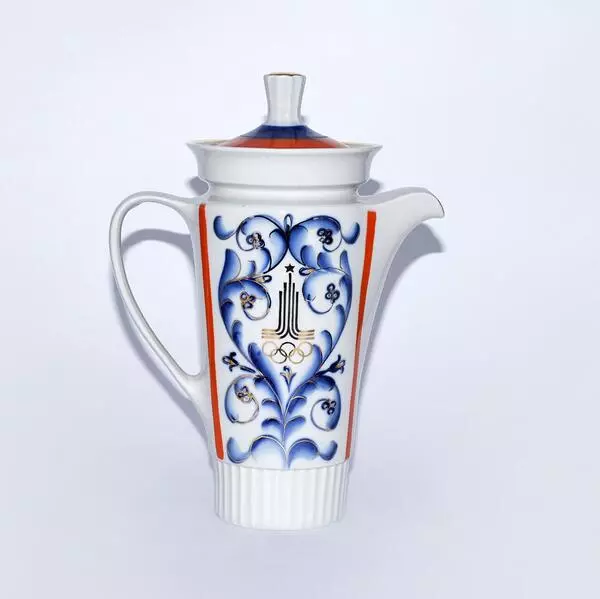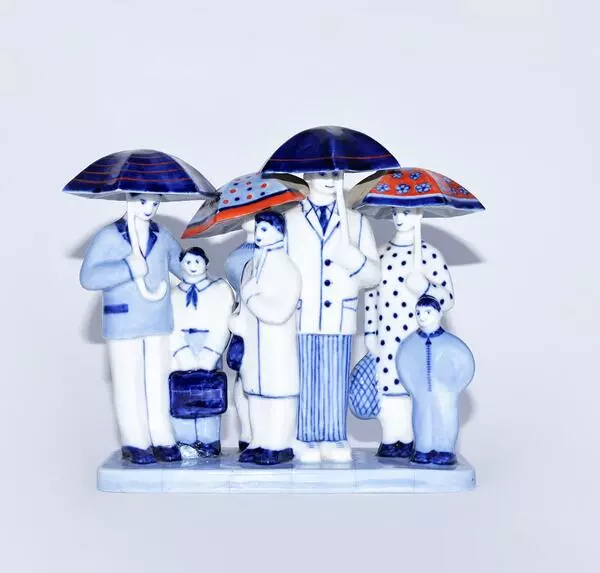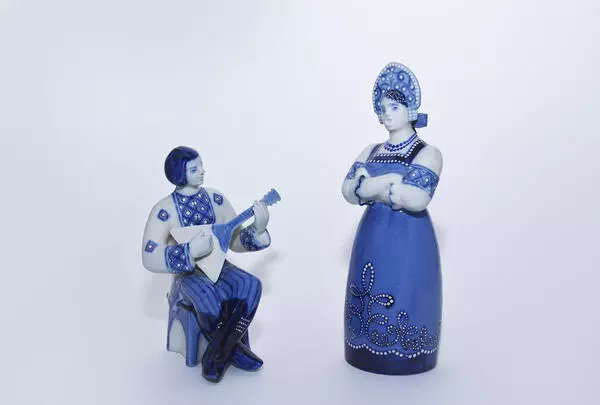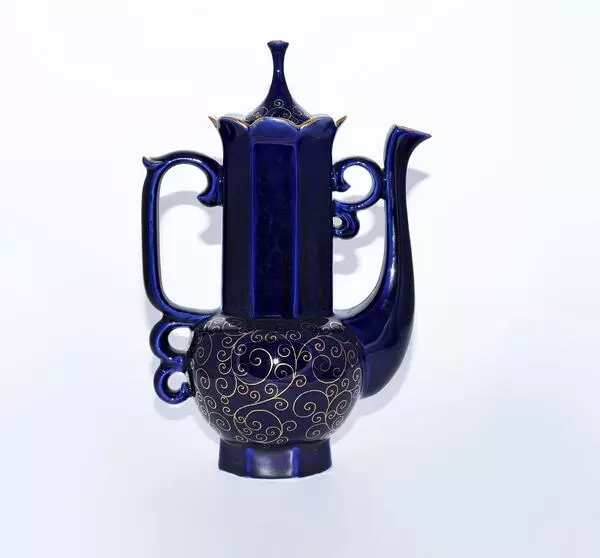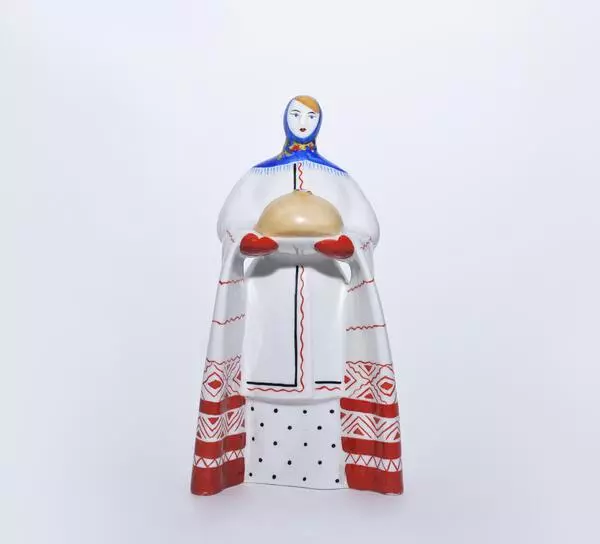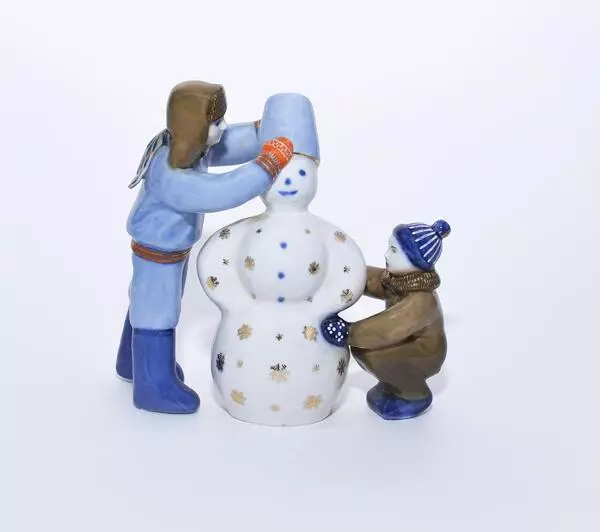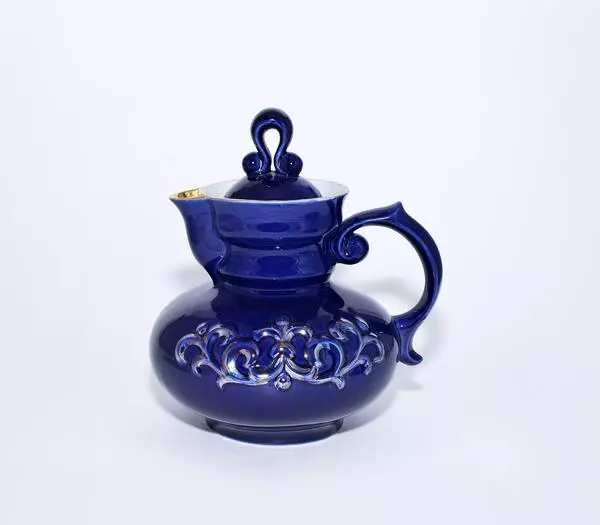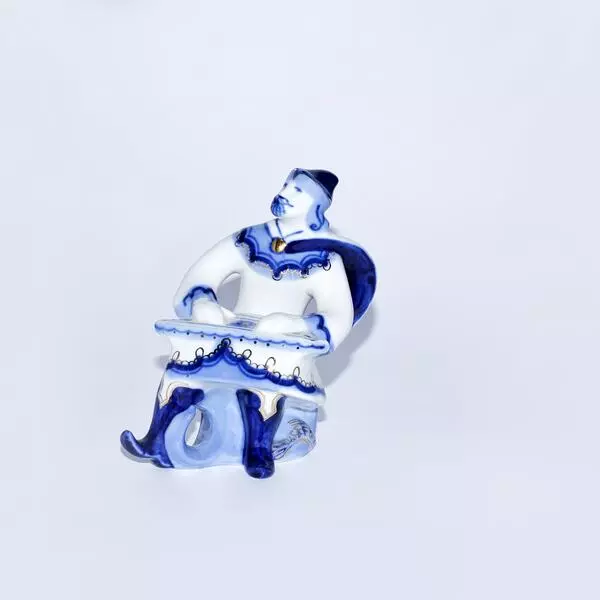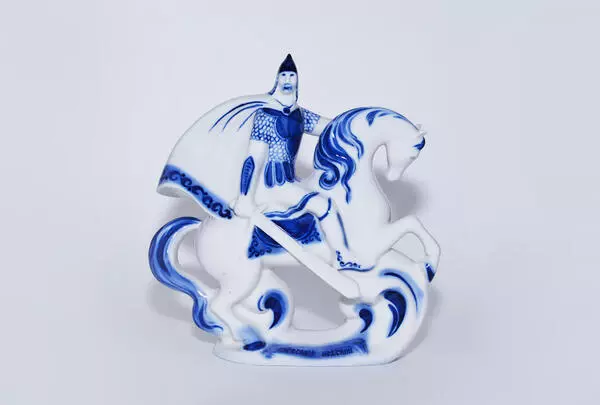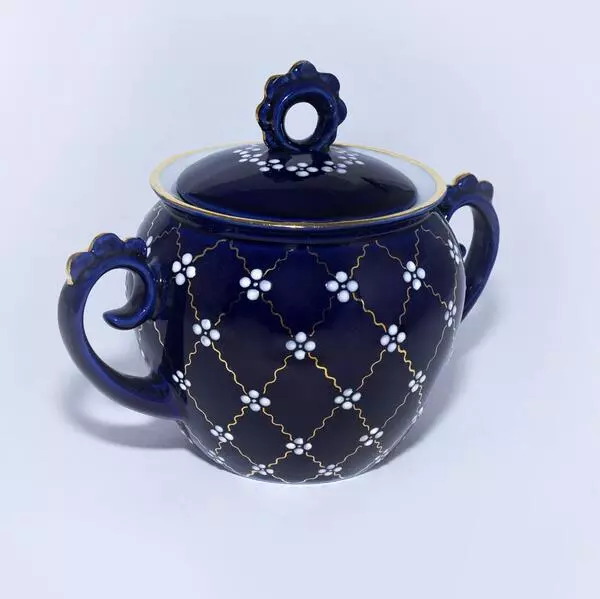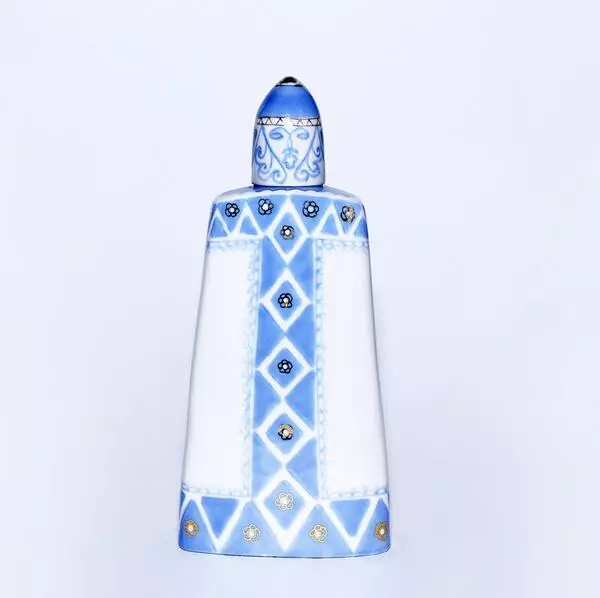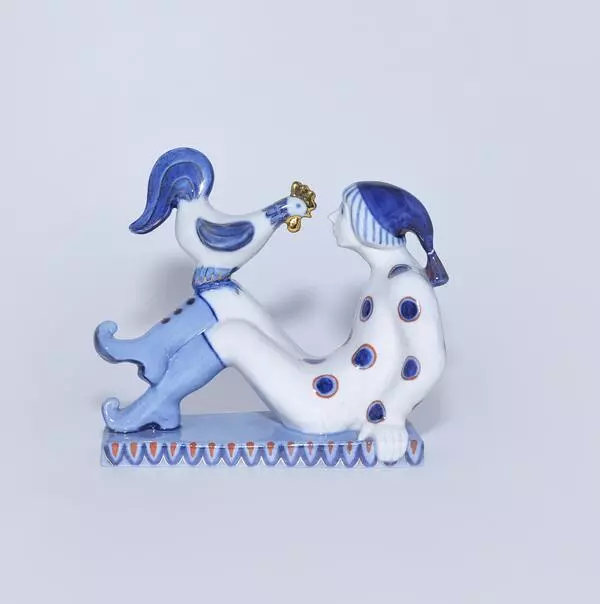The sculptural composition “Troika” was created by the Russian artist Tamara Gavrilova. This figurine is a complex composition that consists of three horses pulling a sleigh and Ded Moroz in a red coat. Despite the number of figures, the sculpture’s size is small (21 cm long and 7 cm wide).
Troika was the old way of harnessing horses for long-distance riding. There was a horse that went at a trot in the center, slightly ahead of others who galloped behind. Due to such arrangement, troikas reached speeds of up to 45-50 kilometers per hour. Such horse team was widespread only in Ancient Russia, and Tamara Gavrilova emphasized the “Russianness” of the combination by adorning the horses with the traditional floral ornament.
Ded Moroz is the main fairytale character of the Russian New Year. Most often, he is portrayed as an old man with a bushy beard in a red, blue, or azure fur coat. It is unknown when the image of Ded Moroz was first used, but researchers came across references to an old man who caused frosts and cold weather in the old Eastern Slavic culture. The chronicles mentioned him as Morok — the god of winter, cold, and frost. They described him as a hunched, disheveled old man in a shirt and bast shoes. He froze rivers and covered everything with snow.
It was believed that Morok could bring only disasters. Over time, the attitude towards him changed. People began to “invite” the god of cold on Christmastide and Maundy Thursday, by treating him with bliny or kutya, left on the porch or window. His name and image changed as well. The Slavs began to call him Treskunets and Studenets and portray him in a long fur coat and cap instead of a shirt.
Pagan holidays, spirits and gods, and Treskunets were forgotten when Russia was converted into Christianity. Only in the 19th century, Ded Moroz was revived as Nicholas the Wonderworker, a good old man who helped those in need. During the reign of Alexander II, the saint’s image was linked to Christmas and New Year.
Despite Ded Moroz being mentioned for many centuries in the folklore, he appeared in the Russian literature only in 1840, when Vladimir Odoyevsky published the storybook “The Tales of Grandfather Irenaeus”.
Troika was the old way of harnessing horses for long-distance riding. There was a horse that went at a trot in the center, slightly ahead of others who galloped behind. Due to such arrangement, troikas reached speeds of up to 45-50 kilometers per hour. Such horse team was widespread only in Ancient Russia, and Tamara Gavrilova emphasized the “Russianness” of the combination by adorning the horses with the traditional floral ornament.
Ded Moroz is the main fairytale character of the Russian New Year. Most often, he is portrayed as an old man with a bushy beard in a red, blue, or azure fur coat. It is unknown when the image of Ded Moroz was first used, but researchers came across references to an old man who caused frosts and cold weather in the old Eastern Slavic culture. The chronicles mentioned him as Morok — the god of winter, cold, and frost. They described him as a hunched, disheveled old man in a shirt and bast shoes. He froze rivers and covered everything with snow.
It was believed that Morok could bring only disasters. Over time, the attitude towards him changed. People began to “invite” the god of cold on Christmastide and Maundy Thursday, by treating him with bliny or kutya, left on the porch or window. His name and image changed as well. The Slavs began to call him Treskunets and Studenets and portray him in a long fur coat and cap instead of a shirt.
Pagan holidays, spirits and gods, and Treskunets were forgotten when Russia was converted into Christianity. Only in the 19th century, Ded Moroz was revived as Nicholas the Wonderworker, a good old man who helped those in need. During the reign of Alexander II, the saint’s image was linked to Christmas and New Year.
Despite Ded Moroz being mentioned for many centuries in the folklore, he appeared in the Russian literature only in 1840, when Vladimir Odoyevsky published the storybook “The Tales of Grandfather Irenaeus”.

